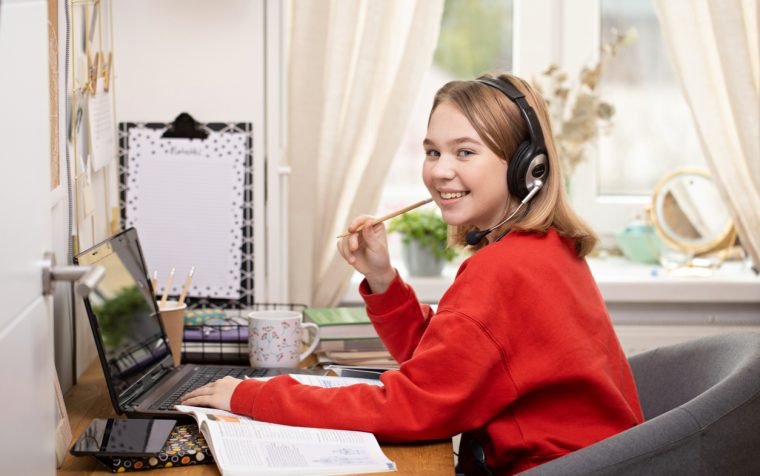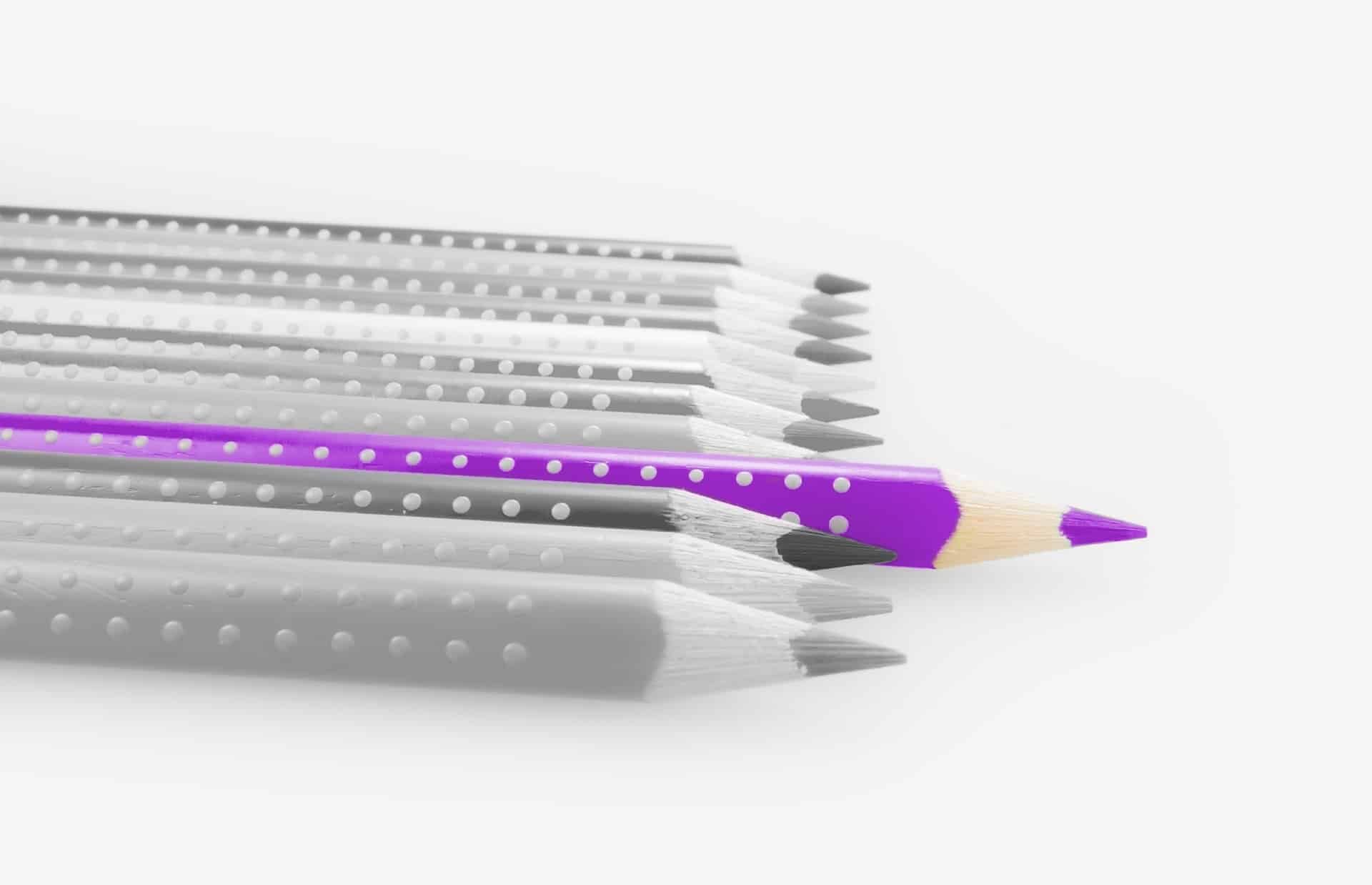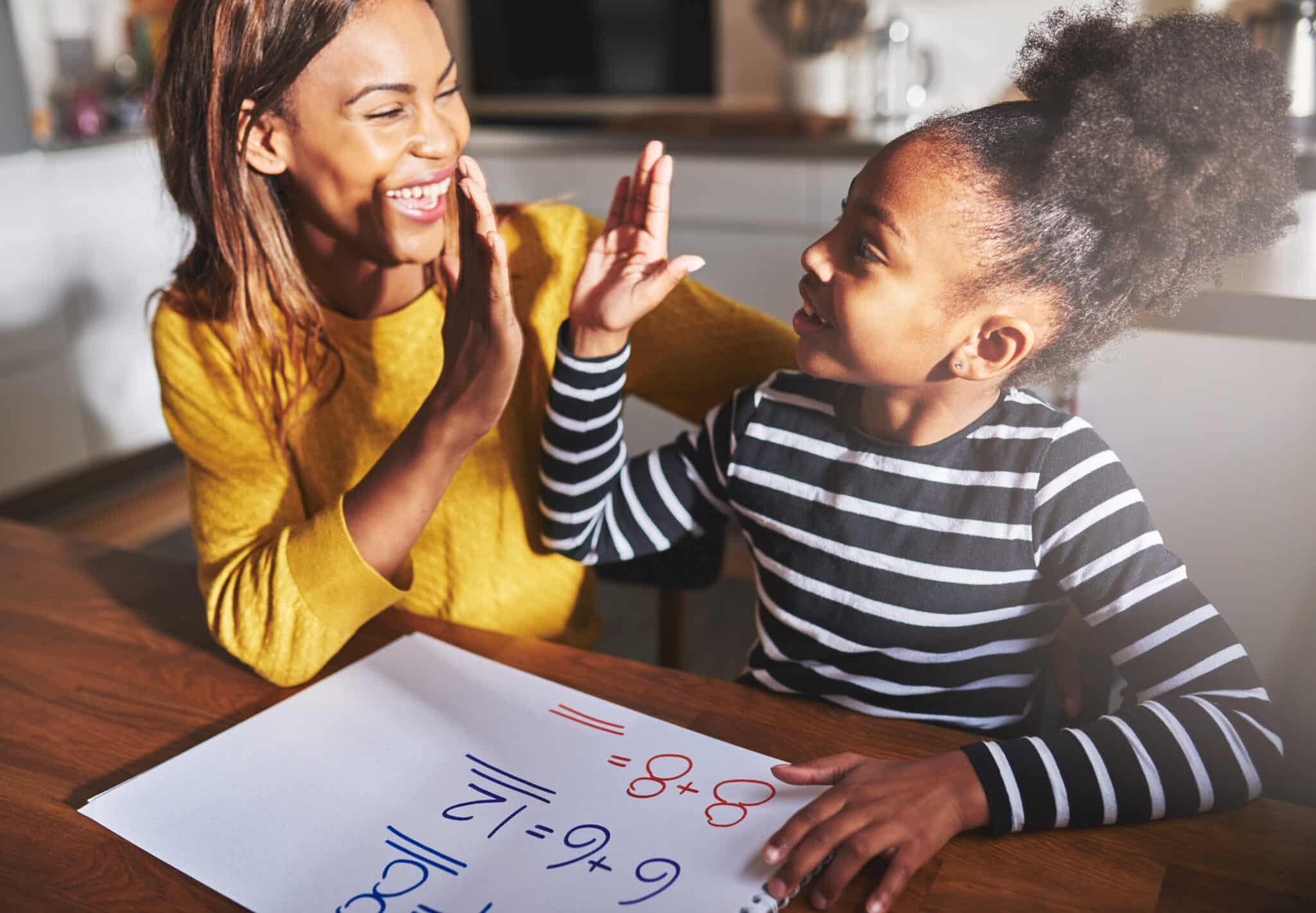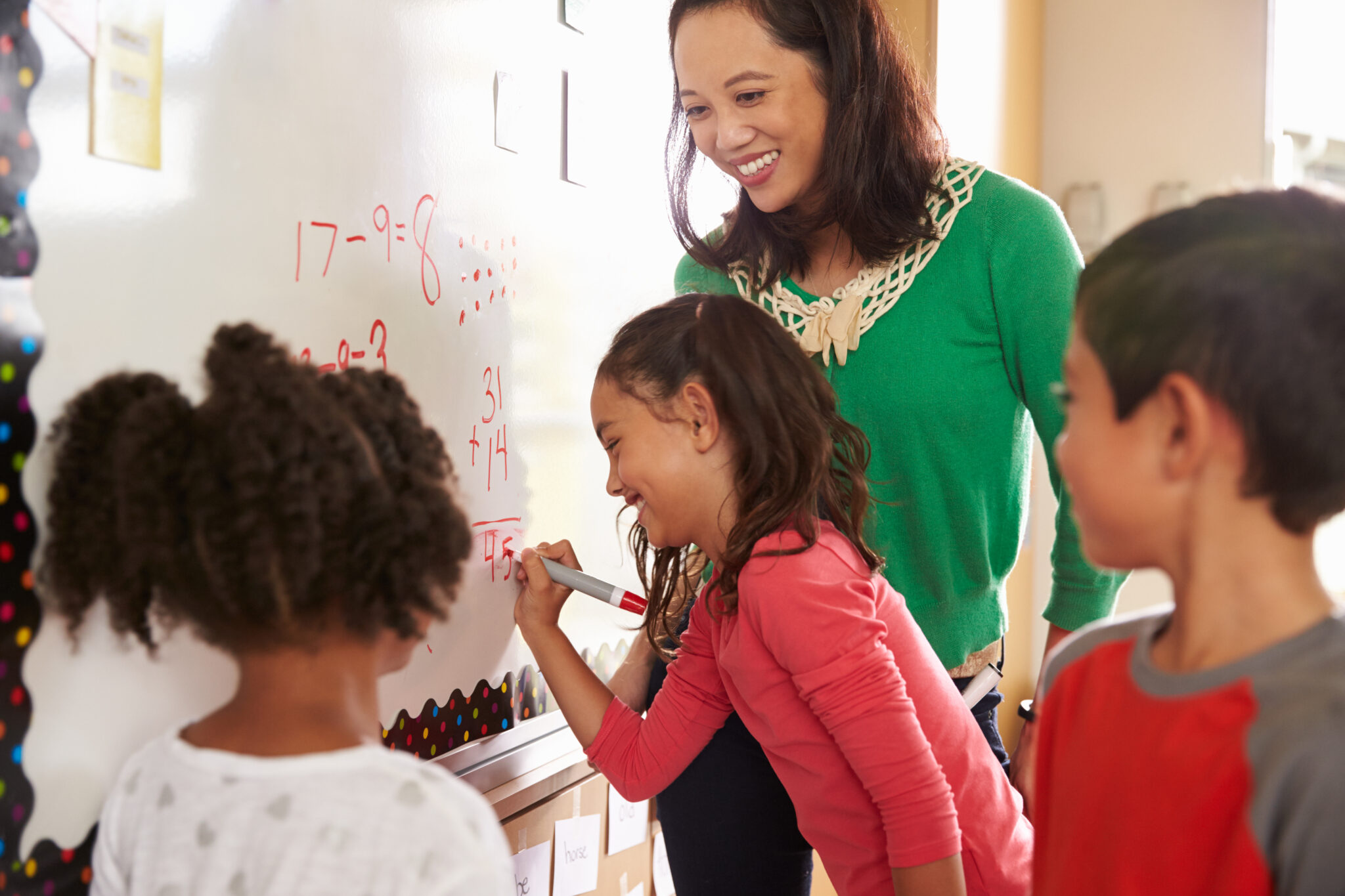Virtual Services: Considerations for Gifted Learners PDF
“Longest day in my history of teaching. Nothing like herding kids who haven’t had instruction, structure, expectations, rules, or pencils for six months! Sweet, good kids. Just going to take some time” (Natalie Boswell, personal communication, September 8, 2020).
This quote is from a second-grade teacher who is teaching asynchronously. She herded her students who were present in class while teaching virtually to those who opted to remain at home. Ms. Boswell is teaching all subjects to all of her students in a heterogenous classroom. Her experience is the same as thousands of teachers across Texas and across the nation.
How does she accommodate differentiation for her gifted students, in class or virtually? What state laws and best practices are in place to meet the needs of virtual learning gifted students? What virtual and self-management tools are available to teachers and students? What practices instituted during synchronous or asynchronous learning adhere to state law as described in the Texas State Plan for the Education of Gifted/Talented Students (State Plan; Texas Education Agency, 2019)? This column will explore the many ways educators of gifted students are transitioning their teaching to virtual and hybrid settings.
Texas State Law
It is important to remember parameters for servicesbefore looking into how to meet the needs of gifted learners in virtual settings. Curriculum and Instruction, Section 3 in the State Plan (4.1,4.2, 4.3), requires that schools offer an array of services that are challenging, address content in the four core areas, and provide services for independent study that culminates in advanced level products and/or performances, such as suggested in the Texas Performance Standards Project. Students must have the opportunity to accelerate in areas of learning strengths and progress at a pace that is flexible enough to accommodate their skills and abilities as stated in the State Plan (4.5,4.6). The core curriculum is the basis to meet the needs of all gifted learners including twice-exceptional, highly gifted, and English learners (4.9). These guidelines defined in the State Plan are the how for gifted services and the what for best practices. In order to provide accommodations for gifted students in a virtual world, well-researched best practices with current technology tools must become a part of educators’ cache.
Best Practices
The State Plan (TEA, 2019) provides leadership in what best practices include. In Section 2, Service Design, itsheading states, “A flexible system of viable service options provides a research-based learning continuum that is developed and consistently implemented throughout the district to meet the needs and reinforce the strengths and interests of gifted/talented students” (p. 8). Section 3, Curriculum and Instruction, defines differentiation as modification through “depth, complexity and pacing of the curriculum and instruction ordinarily provided by the school” (p. 11).
In accordance with this structure, services must include the Texas Essential Knowledge and Skills in the four core areas in order to meet the State Goal for Services for Gifted/Talented Students as quoted here (TEA, 2019):
Students who participate in services designed for gifted/talented students will demonstrate skills in self-directed learning, thinking, research, and communication as evidenced by the development of innovative products and performances that reflect individuality and creativity and are advanced in relation to students of similar age, experience, or environment. High school graduates who have participated in services for gifted/talented students will have produced products and performances of professional quality as part of their program. (p. 1)
District Best Practices
In 1932, Aldous Huxley’s Brave New World offered a version of what the world would be in year 2540 that included some startling predictions that could apply to current times, but didn’t address what educators, students, and families face in year 2020. What Huxley may not have imagined were the tools that now are available and the bright minds who provide and use them.
Best practices for virtual learning are first considered through the lens of the State Plan. Next, best practices relate to what districts provide and allow. For example, if the district uses Google, practices that include strategies and activities that are compatible with Google Meet will be under consideration. In order to understand how current practices mesh with state requirements, I reached out to two Texas gifted education leaders: Kristin Graham, Gifted & Talented Facilitator, Spring Branch ISD, and Monica Simonds, Director of Advanced Learning Programs & Services, Richardson ISD.
Ms. Graham offered the following:
Things I know to be critical during virtual learning are:
- Providing choice and flexibility; I keep asking myself when making decisions and talking to parents, “What is the reasonable course of action here?”
- Despite of or in spite of the pandemic, advanced students have real instructional needs that need to be addressed starting day 1.
- Creating space for acknowledging and addressing social-emotional needs (especially helping students to find meaning and purpose during this time when things seems chaotic and uncertain).
A good example I can give you is for our K-2 G/T students (they are in what we call PGP—Primary Gifted Program): Everyone started virtual for the first 2 weeks, now some students have started in-person, some still virtual, all have access to a site based on remote learning resources developed by Duke TIP (see https://www.dpi.nc.gov/students-families/enhanced-opportunities/advanced-learning-and-gifted-education/2020-aig-remote-learning-resources). (Graham, personal correspondence, September 10, 2020)
The site Ms. Graham shared has built-in differentiation for the regular classroom to be accessed whenever it is needed. She continued that the teachers in Spring Branch ISD will share a live zoom or in-person pull-outs starting in late September for the purpose of discussing these activities. She continued, “This site is available from home or whenever, wherever they want. The teacher at each campus received a ‘copy’ of https://sites.google.com/springbranchisd.com/pgpanywhere/home that can be edited and customize as needed.”
Ms. Simonds shared the following about Richardson ISD’s practices:
Virtual students who qualify for Pullout (2 hours a week) will receive their services virtually from the Advanced Learning Teacher (ALT) assigned to their campus or from another ALT if needed for scheduling or class dynamics purposes. If an ALT has one student virtual, s/he may combine them with another teacher’s class so they have the ability to have conversation. The lessons were revised by the writing team to be appropriate to teach virtually using online teaching best practices. They were then modeled for the rest of the teachers with those teachers acting as student participants. We use Zoom, Google Classroom (3-6), and SeeSaw (K-3). We have a few cases of co-seating because of scheduling. We also provide support for general education for all four core [areas] through extensions and enhancements to the TEKS-driven curriculum.
(Simonds, personal correspondence, September 10, 2020)
Ms. Graham’s and Ms. Simonds’ approaches in their districts mirror criteria suggested by Moore and Kearsley (2011), who say that relationships must be built and that familiarity with technology can provide trust with students and organization of the classroom.
A July 2020 opinion piece in Academity by Meredith Austin, Humble ISD Coordinator, Gifted and Talented, looks specifically at how the variety of practices (e.g., push-in, pull-out, regular classroom differentiation) can be adjusted for the new way of delivering services. This article also provides a table with concrete examples of ways to meet gifted students’ needs. Learn more about the practices described by Dr. Austin at https://medium.com/academity/but-how-will-we-serve-them-now-4e3dda0e054
Self-Management Practices
Another piece of the virtual learning puzzle for gifted learners and their educators refers to self-management. van Gerven (2020) approached self-management in the light of executive function. She maintained,
Students need executive functions to focus and sustain their attention, plan and organize their behavior, prioritize information, control their emotions, initiate working on assignments, and check if they are doing the appropriate things at the appropriate time and in the appropriate manner. Executive function can be compared with a “traffic control center” for human behavior. (p. 37)
An article citing self-management comes from Montilius and Jin (2020), who add the layer of self-management [executive function] to students who learn virtually, when they quote Yarbro and Ventura (2018), “Self-management can be particularly helpful to minimize distraction issues. It is a skill that gives students the ability to intentionally and strategically manage their emotions, behaviors, efforts, and environment in the pursuit of their learning goals” (p. 13).
Montilius and Jin (2020) added that, according to Deci, Ryan, and Williams (1996), students with high levels of innate self-management will become more engaged when the tasks are interesting to them. If students’ self-management skills are low, they instead feel “forced and unmotivated to engage in learning” (Montilius & Jin, 2020, p. 13). Self-management goes hand-in-hand with engagement.
These authors further related that past researchers suggest self-management can be developed through, “encouraging goalsetting, providing direct instruction on self-regulation strategies, offering prompts to spark metacognitive reflection, providing tutor feedback, and fading scaffolding as appropriate” (Montilius & Jin, 2020, p. 13). Self-management or executive function facilitate engagement with best practices.
Technology Tools Best Practices
The Texas State Plan does not specify technology tools to carry out the law and practices for gifted learners. Tools such as Seesaw, Canvas, Schoology, or any application your school makes available for all students, including the gifted, are appropriate. A Google search yields technology tools for student engagement, increasing student engagement, and improving online learning engagement. There is even an Internet blog that offers “131 Tools for Distance Learning and Strategies for Student Engagement” (Albert Team, 2020).
The following are but a few examples of those commonly used. Your district may use other tools that allow you to address other needs for your students.
- If Seesaw (https://web.seesaw.me/) is the district’s tool, teachers will have access to student-driven digital portfolios and simple parent communication. The students show their learning and what they know using annotation tools in Seesaw’s digital portfolio. This allows teachers to understand students’ thinking and their progress so that they can plan for new lessons and help the families connect to their students’ learning.
- If Canvas (https://www.canvas.net) is used by the district, educators will have access to and become familiar with cloud-based technologies that are customizable and adaptable.
- If Schoology (https://www.schoology.com) is the direction taken because TEA provides it for free to districts, educators may take part in webinars and online professional learning sessions. (See https://tea.texas.gov/about-tea/news-and-multimedia/news-releases/news-2020/tea-will-offer-free-learning-management-system-to-texas-schools-for-two-years-to-help-bolster-remote-and-classroom-instruction for more information about this product available through Texas Education Agency.)
Spring Branch ISD added learning paths to the technology tools they use to meet the needs of gifted learners. According to the information Ms. Graham gathered from teachers, the students may all be on different levels and on their own path. In this way, students’ content may be compacted so that they move on to more challenging activities. Also, teachers use breakout rooms to create small groups/flexible grouping and increase engagement and employ digital escape rooms and scavenger hunts.
Along with the myriad of technology tools available to teachers, there are always challenges. Ms. Graham noted that teachers have reported electrical outages and technological issues with tools that do not work or do not work consistently. In these cases, there must always be asynchronous activities and learning planned for backup.
Translation of face-to-face to virtual learning can create confusion in the use of technology tools and how to use them for best practice and with Texas state law, but these tools also offer gifted educators opportunities for change, as Meredith Austin wrote (2020) “Finally, because I do not want to sound downright alarmist, now is also the time that risk-taking and experiments are being embraced. Now is the time to try the new things we always wrote off” (para. 14).
Depth & Complexity, Questioning, and Critical Thinking Practices
Knowing the law, learning about what others are doing, and accessing the tools that can work for your district, your campus, and you are important matters, but how to implement advanced learning in the digital or hybrid classroom looms large for general education teachers. Differentiation through Depth & Complexity, higher order questioning, and critical thinking along with independent study are appropriate approaches for gifted learners that are easy to accomplish either virtually or in the classroom.
Digital differentiation with Depth & Complexity, higher order thinking, and critical thinking all address differentiation and the learning nature and needs of the gifted. All can be addressed using any of the tools mentioned above. Depth & Complexity activities and strategies addressed through the Kaplan model are found in a variety of websites that can be accessed digitally. In using the elements of Depth & Complexity, students are working at higher order thinking.
J Taylor Education has built upon Kaplan’s work to create many useful products for implementing Depth & Complexity in gifted education through its website, https://www.jtayloreducation.com/ and virtual resources section https://www.jtayloreducation.com/virtualresources/. Teachers can download JPEGS of the icons for free at https://www.jtayloreducation.com/free-downloadable-icons/. Although these products are not free, the website offers opportunities for site licenses for all virtual activities and provides free trials for its products, with extended trials during the pandemic. Byrdseed, the work of Ian Byrd (2020), also provides insight into the elements of Depth & Complexity at https://www.byrdseed.com/category/differentiating/depth-and-complexity-icons/.
If you want to encourage curiosity, Byrdseed also offers activities and weekly “puzzlements,” which teachers can sign up for at https://puzzlements.co/. All of these are free. Perhaps the best way to meet gifted students’ needs virtually or in-classroom, is to provide them the Puzzlements site and see where the students take these prompts. (Be sure to read Mr. Byrd’s directions for optimal learning with Puzzlements.)
The following links came from Byrd’s September 18, 2020, Puzzlements post:
- Dinara Kasko uses advanced techniques to create pieces of geometric art – which just happen to be cakes.
- Check out Benoît Leva’s bouncing stop-motion animation, filmed with real stones!
- Fans of The Haunted Mansion at Disneyland will be familiar with this hollow mask optical illusion. Why does our brain interpret the face as popping out when it’s really pushed in? Rachel goes on to make the illusion with her kids.
- What if you made popsicles out of… polluted water 🤢.
- To cleanse your palate, watch a seed grow into a plant over this 36-day time-lapse from Boxlapse.
Critical and creative thinking books can be found at Prufrock Press. Many of these books have e-editions for the virtual student on topics such as analogies, deductive thinking, and mysteries. Texas Future Problem Solving (TFPS) provides opportunities for creative and critical thinking along with collaboration as students work in teams on such topics as Gamification and Sleep Patterns (2019-2020). If the only need is the materials, packets can be ordered through the TFPS website so that can students work individually or in a small group.
Virtual Independent Research and Products
One of the most productive ways the general education teacher can meet the needs of the gifted learner, virtually or in the classroom, is through the Texas Performance Standards Project (TPSP). The Texas State Plan requires that “A continuum of learning experiences is provided that leads to the development of advanced- level products and/or performances such as those provided through the Texas Performance Standards Project (TPSP) (19 TAC §89.3(2))” (TEA, 2019, 3.2C).
The Texas Performance Standards Project’s website recommends tasks (unit of study) for independent research and presentation on subjects interesting to students or for students who have a passionate interest in a subject, the task Pursuit of Passion is available. The website states, “The Texas Performance Standards Project (TPSP) comprises a set of performance standards, curricula, and assessments for differentiating instruction and deepening academic learning. TPSP enhances gifted/talented (G/T) programs from kindergarten through high school” (para. 1).
Tasks are provided in grade spans: K-2, 3-5, 6-8, and 9-12. Within each grade span is information about how to approach the tasks, the TEKS that each study covers and how to assess student learning. Students can go on to the website to explore all the options before deciding where to start a learning journey. If a student has an area of interest or if the whole class is studying a content-related subject, the assessment section of TPSP provides a guide for expectation of gifted students’ learning.
If you, the teacher, say, “When am I supposed to do all of this?”, then think about how students can “buy” time for independent study. When pre-testing is used for all students and the gifted learners already know the material, the student may spend time in the independent study. If the entire class is researching and presenting on a topic, the gifted students may select one of the tasks to go deeper into the subject or, again, may follow the assessment rubric to ensure that the products meets expectations. You don’t have to do it all. Provide the link for the students and let them explore.
Texas Performance Standards Projects offer gifted students an appropriate way to explore interests and meet new learning challenges. Each task or area of study meets TEKS applicable to them and ensures for the teacher that the students are working at grade level and beyond. The addition of a research project with an outcome and a communication requirement builds skills through engaging content that is meaningful to the students.
Summary
The nature of and educational needs of gifted/talented learners is the same whether learning takes place in the classroom or virtually. The Texas State Plan for the Education of Gifted/Talented Students (TEA, 2019) guides educators toward best practices for services and curriculum and instruction. This guide, along with virtual tools, creates opportunities for the gifted and talented to learn with the depth, complexity, and pacing that is appropriate for their education. As gifted learners develop critical and creative thinking skills through virtual tools provided by their district, they also develop their executive function that will serve them now and into the future. This time in our educational history is one that influences educators and students in new ways. As Austin noted, “We do this [the opportunity for students to learn something new every day] by ensuring that the programming and services we provide align to the Texas State Plan andthe current research in the field. We must ensure a Fidelity of Services in our district through defensible programming” (para. 13).
References
Albert Team. (2020, August 3). 131 tools for distance learning & strategies for student engagement. https://www.albert.io/blog/tools-for-distance-learning/
Austin, M. (2020, July, 26). But how will we serve them now? Academity Learning. https://medium.com/academity/but-how-will-we-serve-them-now-4e3dda0e054
Byrd, I. (2020). Byrdseed. https://www.byrdseed.com/category/differentiating/depth-and-complexity-icons/
Deci, E., Ryan, R., & Williams, G. (1996). Need satisfaction and the self-regulation of learning. Learning and Individual Differences, 8(3), 165–183.
Moore. M., & Kearsley. G. (2011). Distance education: A systems view of online learning. Wadsworth, Cengage Learning.
Montilius, K., & Jin, T. (2020). Embedding self-management into mobile learning experiences. The Emerging Learning Design Journal, 7(1), Article 3.
Texas Education Agency. (2019). Texas State Plan for the Education of Gifted/Talented Students. https://tea.texas.gov/sites/default/files/GT_State_Plan_2019_1.pdf
van Gerven, E. (2020). Executive functions, executive skills, and gifted learners. In M. Fugate, W. Behrens, & C. Boswell (Eds.), Understanding twice-exceptional learners: Connecting research to practice (pp. 33–70). Prufrock Press.
Yarbro, J., & Ventura, M. (2018). Skills for today: What we know about teaching and assessing self-management. Pearson.
Cecelia Boswell, Ed.D., taught migrant and gifted students, served as the Advanced Academics consultant for ESC14 in Abilene, TX, and the executive Director of Advanced Academics for Waco ISD. She is an independent consultant working in district evaluation of gifted services and professional learning in gifted education and leadership nationally and throughout Texas. Dr. Boswell has served on the TAGT Board of Directors and as President. She also served as President of the CEC-TAG. She has co-authored five books, including Leadership for Kids.


